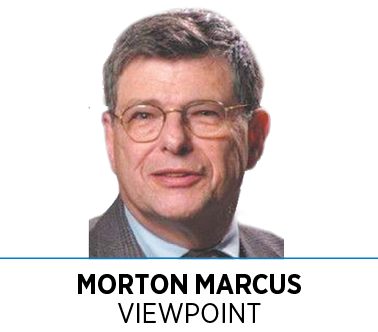Subscriber Benefit
As a subscriber you can listen to articles at work, in the car, or while you work out. Subscribe Now There is a rehabilitated focus by the Governor’s Office on tourism in Indiana. Yes, the stepchild of economic development is being touted as a priority.
There is a rehabilitated focus by the Governor’s Office on tourism in Indiana. Yes, the stepchild of economic development is being touted as a priority.
Outdoor recreation, the OR sector, is an important aspect of tourism. Many people happily travel great distances to visit picturesque and unique environs. They enjoy walking, hiking, bike riding, bird watching, bug collecting, climbing, picnicking, playing golf and tennis, and numerous other outdoor activities.
A report from the U.S. Bureau of Economic Analysis indicates Indiana already has a well-developed OR sector. BEA’s comprehensive view of the economic dimensions of OR found Indiana ranked 14th nationally in the percentage of state GDP originating in OR. That’s standing right behind No. 13 Oregon.
However, that report includes not only the use of RVs as a means to OR, but also the manufacture of those vehicles. A careful reading of the study shows manufacturing accounts for 49% of Indiana’s OR-GDP, compared with 12% nationally. We’d expect Indiana accommodations and food services to be more than 15% of OR-GDP when the national figure is 27%.
Fortunately, there is a 23-year-old plan to boost OR tourism in Indiana. It involves a premier hiking trail from Deam Lake in Clark County to Martinsville in Morgan County, a trail of roughly 150 miles, winding through six additional counties (Scott, Washington, Jackson, Brown, Lawrence and Monroe). This is the Knobstone Trail, which already exists with the exception of a few unconnected sections. With pending rail-trail connections, the Knobstone will link the Indianapolis metro area with that of Louisville.
With its diverse levels of difficulty, the Knobstone has the potential to bring recreational visitors from near and far. However, no state or local agency identifies the eight-county Knobstone as a regional development corridor.
How can Indiana realize the benefits of the Knobstone Trail?
1. Public and private entities in the eight counties need to see the unified Knobstone as a significant asset for economic development and quality of life.
2. Those counties need to mount a coordinated effort to energize state government’s prioritizing south central Indiana as a magnet for population growth, community stabilization and redevelopment, plus commercial investment.
3. We need a public policy commitment to complete the Knobstone and to safeguard its physical integrity and appeal to diverse trail users.
4. And we need a commitment of public and private funds, joined with a sustained program of volunteer time, to establish, maintain and enhance the trail’s condition and access.
This is not a new initiative, but rather one that has languished because too few Hoosiers have been acquainted with the potential of outdoor recreation and the Knobstone.
Here is an eight-county, regional stimulus that uses Indiana’s assets and will restore pride to an area of the state that is largely forgotten and often self-denigrating.
Let’s accelerate progress on the Knobstone and not falter for lack of vision or the courage to succeed.•
__________
Marcus is an Indiana economist.
Please enable JavaScript to view this content.

Between connecting the trail, and making it easier to do larger caving trips or having the outfitters provide bigger more adventurous trips, we could get a much bigger name for ourselves.
Excellent points but spot zoning and crony zoning threaten the KT.
Scott County zoning decisions are not compatible with the Trail.